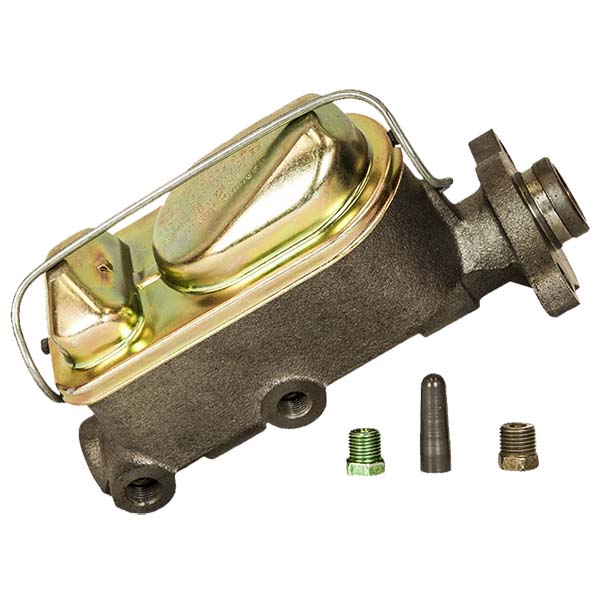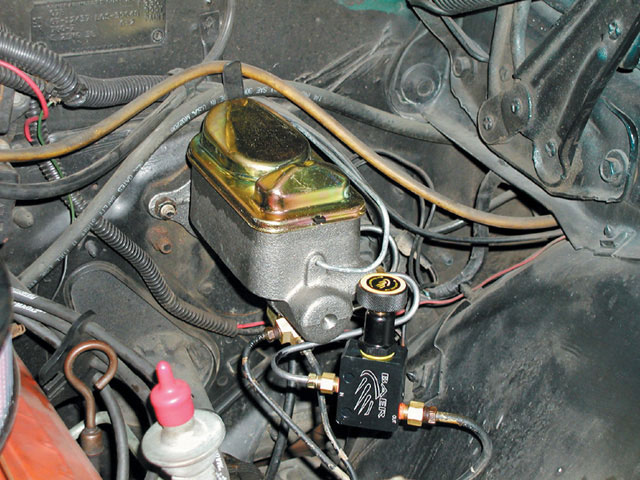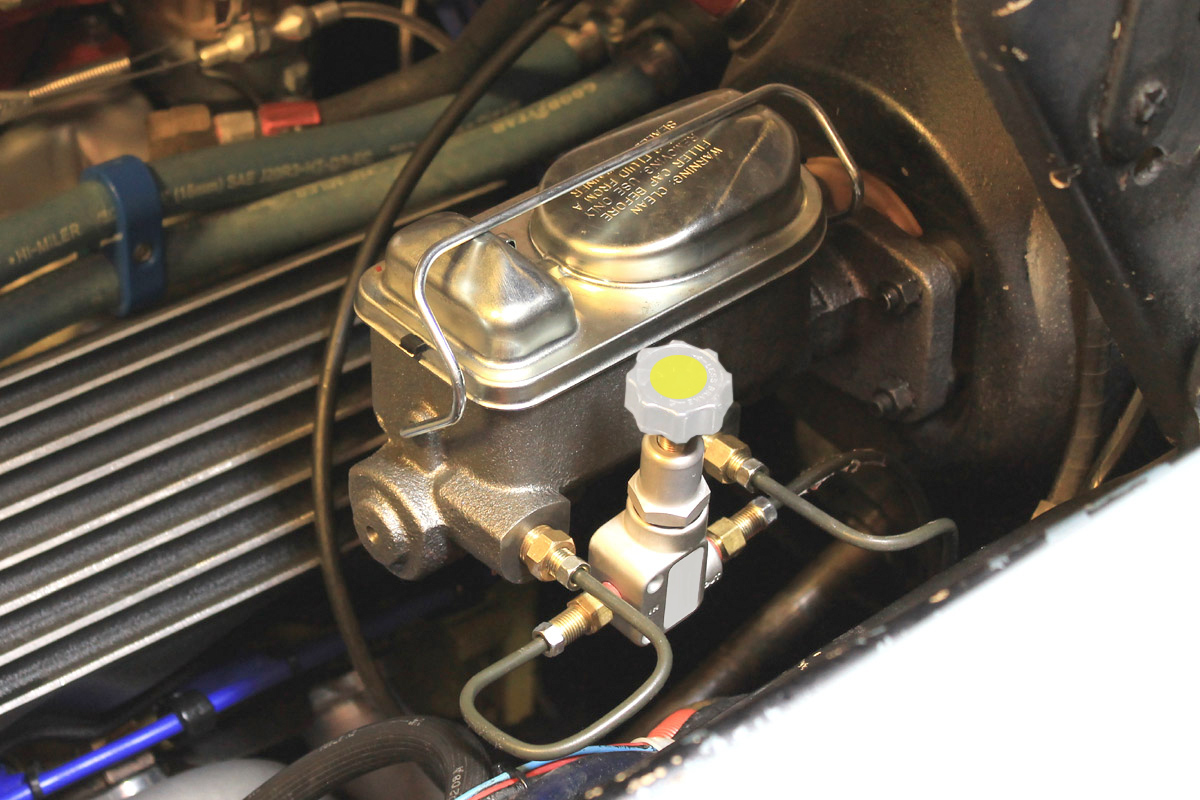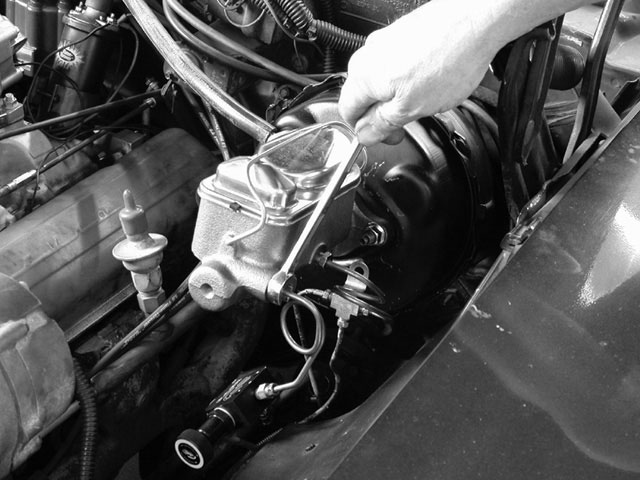Results 21 to 26 of 26
-
02-11-2018 #21
So I ran a test just now...
On my 15/16" MC (same as below) I measured the output of the MC on front and rear ports after one piston stroke. Both come up with ~5g of fluid output. I guess I would have expected closer to 10 on of them of the other was 5, (if in fact there's a 2:1 volume ratio).
I'm so confused now on this damn thing... nothing makes sense..
- 9/16" port is on the front reservoir - so implies front port goes to rear brakes
- Every picture I see with pre-assembled MC/booster kits with this kind of MC has the front port on MC going to the front on prop valve. Implies front port goes to front brakes
- I keep reading the larger reservoir goes to the rear brakes (due to larger movement of drum brake shoes). But this MC has the 9/16" port on the small reservoir up front.
- fluid volume output seems to be the same on both ports (even if there's supposed to be a 2:1)
I'd call Baer, but frankly I'm not sure I trust what they're telling me anymore...
 1971 Camaro
1971 Camaro
GM HT383, MiniRam EFI, AFR heads
"8-speed" trans (700R4 + Gear Vendors OD)
-
02-11-2018 #22Rear drums cylinders have a lot less volume than a front disc caliper piston(maybe 1" diameter), why the rear on a disc drum and even disc/disc(as rear calipers have smaller pistons) have a smaller reservoirs for the rears.
Most stock second gen F bodies have a 2 15/16" front caliper piston, and the 79-81 TAs had a 2.5" rear caliper piston.
When you look at some of the specs of original 60 MC some have different % volume front to rear (60/40) than other applications do. The engineers took lots of variable in their design that we don't when we put an aftermarket or racing system together. Heck lots of road race and circle track cars use separate MC front and rear with a balance bar so they can fine tune front to rear piston sizes as well.1978 Black Trans Am 455 Edelbrock heads [email protected] through mufflers on pump gas
1981 Trans Am 400 stock type motor
79 Camaro getting a 500" 695 hp IA2 Pontiac motor
1965 GTO project car
470ci/Chevy dual quad 409 604 HP 64 Impala SS project
2004 Pulse Red GTO
02-11-2018 #23I found this thread on a search...
https://www.pro-touring.com/threads/...+cylinder+port
So maybe the rear port really is for the front brakes on this MC...1971 Camaro
GM HT383, MiniRam EFI, AFR heads
"8-speed" trans (700R4 + Gear Vendors OD)
02-11-2018 #24Ok, I think I'm becoming convinced that the front port is for the rear brakes on my original Baer MC...
I did a search online for images of "Baer master cylinder" and came across these photos clearly showing adjustable proportioning valves hooked up to the front port (obviously for the rear brakes)...


And this one is from a Hot Rod magazine article about installing Baer brakes on a 1st gen Camaro...
 1971 Camaro
1971 Camaro
GM HT383, MiniRam EFI, AFR heads
"8-speed" trans (700R4 + Gear Vendors OD)
02-12-2018 #25 Registered User
Registered User
- Join Date
- Sep 2009
- Location
- Ontario, Canada
- Posts
- 167
Some tandem masters have a small hole drilled in the wall between front & rear reservoir to equalise fluid level in the reservoirs as pads wear. The hole is high enough to maintain a deep enough level so that slosh doesn't uncover the ports supplying the pistons under g-loads (especially braking load) and to ensure if there's a leak draining one side, other circuit still works.
Look at where the holes are in the bottom of the reservoirs that supply fluid to the pistons. Tip the master forward to see where both remain covered. May help explain some of the difference in sizing.
If you are getting same volume out of both ports under full stroke with a fully bled master and not allowing air back into the ports during retract (could verify with e.g. 10 full strokes to get a more accurate measure) then it's 1:1 and doesn't really matter which port you connect to if volume is the same.
Note some masters also have differential bores between primary and secondary, to give differential primary and secondary circuit pressures ... but not common.
IIRC my stock master also had the larger reservoir on the rear and rear went to front brakes and front went to rear brakes. Had to swap lines when I fit a Wilwood master.Duane
'74 AMC Javelin AMX
02-12-2018 #26Thanks. I actually solved my overall braking issue tonight... Turns out the original way I had it plumbed (front port to rear brakes and vise versa) was correct. A few other factors may have come into play to solve the overall issue, but suffice it to say, everything is working properly now.
So yeah, I guess to close this thread out as well (in case anyone in the future does a search with a similar issue)... here's the link to the resolution (post #30 in this link).
https://www.pro-touring.com/threads/...25#post12572251971 Camaro
GM HT383, MiniRam EFI, AFR heads
"8-speed" trans (700R4 + Gear Vendors OD)





 Reply With Quote
Reply With Quote



